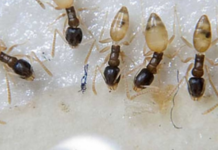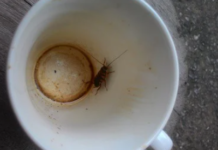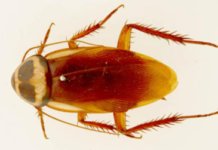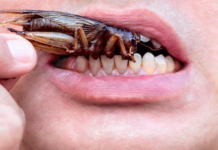You must have encountered shrimp on your menu at home or at different seafood restaurants. Cockroaches are the most common invasive household pests. Clearly, they have nothing in common! You would think right? Are shrimp and cockroaches related? Read more to understand the similarities and differences between roaches and shrimp.
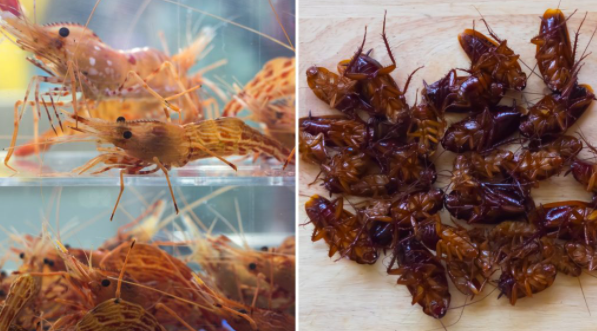
Are shrimp related to cockroaches? Though it may seem these two creatures have nothing in common, shrimp and roaches are related. First, they belong to the same kingdom, Animalia. Secondly, they both are in the same phylum, Arthropoda. This means they share they have similar features such as; three-segmented body, they both have exoskeleton and finally they both have jointed legs. Continue reading to understand the similarities and differences.
Are Cockroaches and Shrimp the Same?
Roaches and shrimp are not the same, but they are similar in terms of scientific classification. They are both classified under phylum while their species is referred to as Arthropoda. This could mean that they come from the same ancestor and share many same traits and features.
As time went by, significant changes separated these creatures into separate classes. Shrimp as scientifically documented evolved into crustaceans and inhabited the water, preferably underwater. Cockroaches on the other handed inhabited the land. This is where the class separation emerged. Roaches are classified as insect or insects while shrimp as crustacean.
Shrimp Vs. Cockroaches
To understand better how these two creatures belonging the phylum arthropods behave, let’s discuss and explain what defines them.
What Are Shrimp?
Shrimps are the long, spindly creature usually found at the bottom of oceans or river. They are found in seafood restaurants as delicacies. They live in water and you can refer to them as arthropods. They have an exoskeleton.
Where Do Shrimp Come From?
Their natural include oceans and rivers and may other freshwater lakes and streams. They are commonly found in water and shallow water, you can find them anywhere there is water. Most of the shrimp we see are from costal farming ponds basically reared to be sold as food.
What Does a Shrimp Look Like?
Although shrimp may differ slightly in appearance but the anatomy is the same for all shrimp and prawns. Their color may also vary but they all have similar basic anatomy. They have a three-body part including a head, thorax and abdomen. They have jointed legs and hard exoskeleton on their outer bodies.
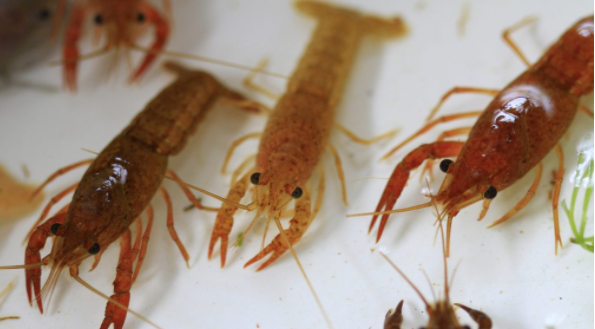
What is the Size of a Shrimp?
How big is a shrimp? The size of shrimp tend to vary. They range in size from super small to large. The smallest shrimp species include the fairy shrimp and brine shrimp. They are tiny such that it becomes quite difficult to measure.
The largest known shrimp species is the mantis shrimp which can measure up to 18 inches long. Most shrimp though to measure within the 1.5 to 3 inches.
The Number of Legs Shrimp Have?
How many legs do shrimp have? Some people claim that a shrimp has 26 legs while others say that a shrimp has 20 legs. But here is the breakdown; shrimp have 5 pairs of walking legs (10), 5 pairs of swimming legs which 10 in total and 3 pairs of feeding appendages. The debate is on the number of legs depends on whether you consider their feeding appendages as legs or not.
What Do Shrimp Feed on?
What do shrimp eat? First, we have freshwater shrimp and saltwater shrimp. They have different diet. Their diet depends on their ecosystem. But still, a shrimp will feed on anything they found. They can eat the fish, plankton, snails, dead thing, worms, plants, algae, other shrimp and many more thing.
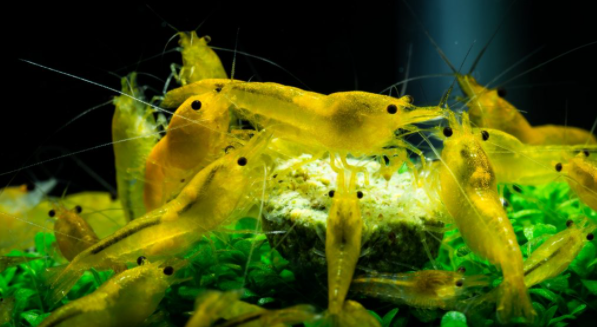
What Is The Lifespan Of Shrimp?
How long do shrimp live? Generally, shrimp have a lifespan of between one and seven years. But those sold for commercial use are not lucky to live this long. In fact, younger shrimp are caught and kept to be sold in restaurants. They are considered tender than the larger shrimp.
Cockroach Information
To understand the difference and similarities between shrimp and cockroaches, let’s discuss roaches independently.
Where Do Cockroaches Come From?
We encounter roaches nearly daily in our homes. They are the most common invasive household insects. According to scientific research, there over 4,500 species of roaches globally. They are known to be resilient and tend to withstand even extreme temperatures. This makes to be found almost anywhere. Cockroaches unlike shrimp, they live on land but a few enjoy residing near water.
What Do Cockroaches Look Like?
Although we have different species of roaches just that tend to look different. Just like Shrimp, they all share some of the common features such as:
- have a three-part body that includes the head, thorax and abdomen
- have jointed legs
- hard exoskeletons
All the traits mentioned above are also found in shrimp as discussed earlier in the post. Different cockroach species have features that they all have including: flattened, oval shaped bodies, long antennae, hidden heads and six legs.
Cockroaches have species with wings which makes the specific roaches to fly but most are adapted to the land and to crawl than fly.
How Big Are Cockroaches?
How big are roaches? Cockroaches tend to range in size from about 0.5 inches to over 3.5 inches. The larges is the burrowing cockroach. In terms of size, roaches don’t get as big as shrimp as but probably bigger than most insects.
The Number of Legs Cockroaches Have?
How many legs do cockroaches have? Roaches have six legs in total, this is far much less than what a shrimp has. But one similarity here is both cockroaches and shrimps have jointed legs. They are usually covered in tiny spines that gives the roaches traction especially when running across smooth surfaces. The spines are also the reason roaches tend to move so fast.
What Do Cockroaches Eat?
When it comes to diet, cockroaches are quite similar to shrimp. They eat a little bit of everything. They eat both plants and meat. Generally, cockroaches tend to eat almost anything they can find in their mouth including dead decaying animals and plants.
Also Read: What Do Cockroaches Eat?
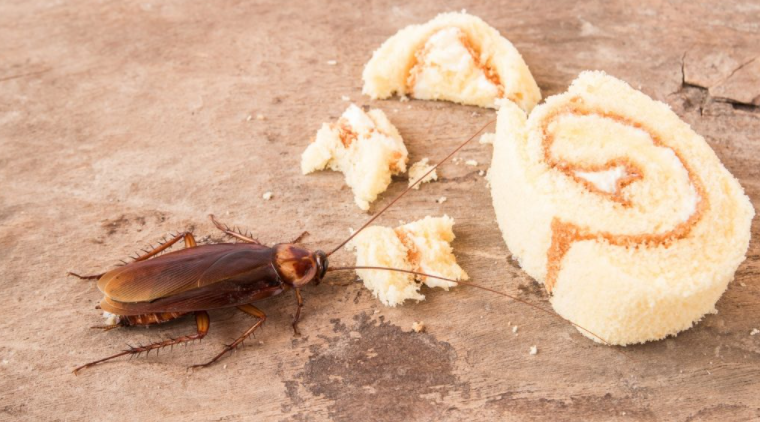
How Long Do Cockroaches Live?
Cockroaches have a lifespan of between one and one and a half year. This applies to most species. However, the female tend to live longer than males. Still, it may take quite number of roaches 600 days to fully live to maturity but most don’t get the chance to live up to the period since many tend to die before ever becoming adult roaches particularly the males.
Also Related: How Long Can Cockroaches Live Without Food, Water? – Information and Facts
Shrimp And Cockroach Differences:
Here let’s compare the two: are they the same or different?
Bodies
By the look of it, shrimp and roaches tend to resemble. Just from their skeletons, legs, and how their antennae appear one can clearly say they have the same evolutionary origin. In fact, the components in shrimp that tend to cause allergens can also be found in cockroaches- International Archives of Allergy and Immunology
Diet
As mentioned earlier, roaches can eat almost anything. This is also the case with shrimp. Both can be described as scavengers. Cockroaches are known to eat plant, garbage, rotting wood and even human poop. In comparison, shrimp eat dead fish, warm, and crabs. The difference in diet arise from their different environment.
Legs
They both have multiple legs that are spiky. While a cockroach will have up to 6 legs, shrimp have up to 20 legs.
Roaches are known to be resilient such that if a cockroach loses one of its legs, it can regrow within a couple of weeks or still use the other legs while the lost one is regenerating. In comparison, if a shrimp loses one of its legs, it will have difficulty to find balance and lose its ability to swim. While a shrimp can also regrow lost leg, it requires favorable conditions to restore the lost leg.
In both cases, a shrimp and cockroach have jointed legs.
Antenna
The antennae in both cockroaches and shrimp ae similar. They are: two individual antennae, made up of scales and extend from the head.
Shrimp and cockroaches both use the antennae for allowing them to sense movement, taste the air, for mating, help the creature to move around avoiding objects and register thermal, tactile and humidity.
Size
To differentiate a shrimp from a cockroach, look at their size. A prawn will grow up to 5 inches in length, they can even get longer. Roaches on the other hand, tend to grow around 2 inches at their longest.
In all cases, their sizes is too small compared to their predators which makes them to easily hide in areas where they cannot be reached easily. Shrimp tend to tuck themselves under rocks, seas or freshwater plants or sometimes in sediment. Household roaches are likely to hide in wall cracks, holes and crevices.
Behaviors
When it comes to behaviors, both shrimp and roaches share many behaviors. This can include how they move and their lifespan. Also, their behavior can be narrowed to how the look for food and how they choose where to live.
Lifespan
The lifespan of cockroach and shrimp are more or less the same. They tend to live for about a year at minimum. However, shrimp can live quite longer than the roaches. It is rare for a cockroach to live beyond 2 years but a shrimp can live up to 6 years. The female roaches tend to live longer than their male counterpart. The American cockroach for instance is known to have the longest lifespan of more than 700 days.
Habitat
Shrimp are commonly found in salt or fresh water bodies particularly in warmer climate. Although a shrimp can live without water for a short period of time, if taken onto land it will eventually suffocate, dehydrate and die.
Roaches on the other hand, can live almost anywhere on land. Although they can hold their breath for a considerable amount of time, they cannot survive in water.
Speed
Both cockroaches and shrimp are known to have an incredible fast speed. Shrimps are fast mover, a case in example of the mantis shrimp. It is known to be one of the fastest creature in the entire ocean. This speed can be credited to their aerodynamic body and many leg they have.
A direct comparison to speed shows that a cockroach can run up to 50 body lengths a second while a shrimp can swim 30 body length a second although they both live in different habitat.
Are Shrimp Cockroaches Of The Sea?
From the discussion one would easily conclude that shrimp are the cockroaches of the sea. This is true since they have more in common. In fact, they share most of the primary features and traits found in roaches such as:
- Their diet
- How they move
- How their body is designed or structured
- Their role in the in the ecosystem
But one would still ask, these features or traits can be found in other insects and crustaceans. Yes, roaches and shrimp aren’t special. As discussed in the post, there are also clear contrast that set these two creatures apart such as: the difference in number of legs (cockroaches have fewer), roaches have a shorter body, roaches have shorter lifespan, and roaches cannot swim nor live in water. It is also clear roaches are faster, they can occasionally fly etc. The fact is, it is easier to compare shrimp and cockroaches than it is to compare to other members of their own classes though they are all arthropod.
Why Are Shrimp the Cockroaches of the Sea?
What do shrimp and cockroaches have in common? We have mentioned quite a number of similarities why shrimp considered the cockroaches of the sea. This includes their diet, how their bodies are structured and so forth. In short, they share most of the primary traits found in cockroaches.
Are Shrimp and Cockroaches From the Same Family?
Doesn’t it bother you whether shrimp and cockroaches come from the same family? As mentioned earlier in the post, shrimp are classified in the family of crustacea while cockroaches are from the superfamily Blattidae.
Remember that they belong from the same kingdom, Animalia and phylum Arthropoda. This similarities brings them closer and make them have some relation.

